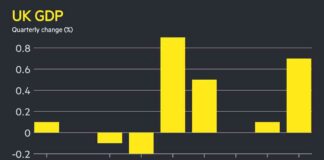The landscape of salary raises in the corporate world is shifting, with companies indicating a trend towards smaller pay increases for employees in the coming years. This adjustment reflects a broader trend of decreasing leverage for workers, as evidenced by recent job reports showing a slowdown in hiring. As a result, employers are taking measures to control payroll costs by reducing or freezing bonuses, offering fewer and smaller merit increases, and exploring cost-saving strategies such as hiring in lower-cost cities.
The Changing Landscape of Raises
According to a survey of 1,900 U.S. companies conducted in the second quarter, nearly half reported cutting back on their budgets for salary increases this year. This has led to a decrease in the median raise from 4.5% in 2023 to 4.1% this year. Looking ahead, companies are projecting an even lower median raise of 3.9% in 2025, signaling a continued trend of shrinking pay increases for employees.
Ellen Teeter, a 23-year-old bank operations analyst in Charlotte, N.C., expressed disappointment with her 1.5% raise this year, which fell below her expectations. Despite receiving a 10% signing bonus upon joining the company and being promised raises ranging from none to 10%, Teeter and her colleagues mostly received raises between 1% and 2%. While she is currently staying put due to future growth opportunities within the company, Teeter emphasized her desire for higher pay and more meaningful work.
Impact on Job Candidates
While raises remain relatively high compared to historical standards, they are notably lower than the substantial increases offered to retain employees in previous years. The decline in pay raises has particularly affected new hires, with fewer job candidates receiving salary boosts when switching roles compared to late last year. This trend is reflected in data showing that 58% of recent hires received higher pay with their new positions, down from 70% in the fourth quarter of the previous year.
As companies seek to reset pay rates, some are exploring strategies like hiring talent in lower-cost cities to take advantage of “geographic arbitrage.” This approach allows companies to reduce costs and find efficiencies by paying lower salaries in locations like Manchester, England, or Budapest. Such practices reflect a broader shift in the job market dynamics, where employers are exerting more control over salary offers and hiring decisions.
Navigating the New Normal
The cooling job market has given managers more leverage in negotiations, leading to reduced salary offers for new hires. Job seekers are increasingly aware of the competitive landscape and are less likely to negotiate their initial offers, as employers have a wider pool of qualified candidates to choose from. Additionally, fewer new hires are successful in negotiating better offers, highlighting the shift in power dynamics between employers and employees.
Pay rates for new hires across industries have also seen a decline, with data showing that new-hire pay rates are 7% lower than they were in 2022 for similar roles. This trend is especially pronounced in white-collar roles like finance, where new-hire pay rates have decreased by 9.2% since the previous year. Companies are recalibrating their hiring practices to align with the changing job market conditions and manage costs effectively.
Challenges and Considerations
While reducing raises can result in significant cost savings for companies, it poses challenges in retaining high-performing employees and maintaining motivation among staff. Compensation experts advise companies to allocate resources strategically, focusing on rewarding top performers rather than spreading bonuses and raises evenly across the board. This targeted approach ensures that employees feel valued and incentivized to stay with the company despite smaller pay increases.
Jim Chung, a compliance specialist in New York, shared his experience of receiving a flat bonus this year, which he perceived as smaller due to inflation. Despite this, Chung acknowledged that his base salary increase and job satisfaction played a role in his decision to stay with his current employer. The balancing act between cost-cutting measures and employee retention remains a critical consideration for companies navigating the evolving landscape of salary raises.
In conclusion, the trend of shrinking raises reflects a broader shift in the dynamics of the job market, with employers exerting more control over payroll costs and employee compensation. As companies navigate the challenges of managing costs while retaining top talent, strategic decision-making and a focus on employee engagement will be essential in adapting to the new normal of salary increases in the corporate world.






















